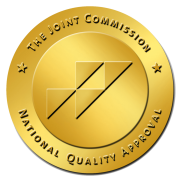Substance Use Disorder
The most recent solution for the extremely deadly form of cancer, melanoma results in a change to the immune system which allows the immune system to recognize, target and attack the cancer. Otherwise melanoma cancer grows unchecked until death.
Undoubtedly you have heard that “Substance Use Disorder” (SUD) is a relapsing, chronic disease much like diabetes. Without the recognition of the relapsing nature of the disease, and identifying the stimuli which prompt relapse, addiction often grows unchecked through a progression of hospitals, institutions and death.
The opportunity to choose between addiction and recovery is episodic and fleeting. Due to forebrain, executive function impairment, rationality and self-control are compromised. The alcoholic/ addict loses their capacity to choose. The alcoholic/ addict often fails to recognize impending danger to the health and well-being of their loved-ones and themselves caused by their disease.
Once drug and alcohol use has been arrested, the alcoholic/ addict may begin to recognize the symptoms of addiction and identify craving or aversive stimuli which can lead to relapse. Self-monitoring assists the alcohol/ addict watch for emotional, mental and behavioral cues which indicate the development of recovery skills and gains, or a return to alcohol/ drug use. Through cognitive, behavioral and social exercises relapse prevention can be practiced.
The commercialization of addiction treatment and recovery has resulted in expensive services which result in occasionally good short-term outcomes. The motive for providing these services is too often fee-for-service profiteering. When the payor and payment for services is exhausted, there are no resource left for integrating clinical gains into real-life circumstances. Recovery management has been abandoned to “self-sustained” sobriety, sometimes with peer support.
“Shift by government and private sources from purchasing time, or session-limited units of service – to purchasing and integrated program of management and support for long-term recovery; shift in emphasis from treatment intensity (crisis stabilization) to treatment extensity (prolonged recovery maintenance).”(1)
Mutual support groups offer peer support on a voluntary basis. This has been an effective model for people who remain willing and open to recovery despite its challenges and demands for change. People who encounter periods of ambivalence, avoidance, defiance or other roadblocks benefit from professionally provided recovery management which is designed to anticipate and prevent incidents of recovery deterioration and relapse. Recovery management also offers professional contact, support and access to assistance regardless of the person’s level of willingness.
Outpatient treatment and recovery management differ from the “acute care model” in that a multitude of highly restrictive and costly resources is not required in the entry level of care, save medical detox in selective cases. Outpatient treatment and recovery management provides case management, coaching and support over the long-term, in the natural environment where the client resides.
The distractions, triggers and the wreckage from reckless drug/ alcohol influenced behavior must be encountered early in sobriety so that specific recovery skills are exercised in the context where they are needed. If a person new to recovery encounters these stimuli for the first time without the support and guidance of professionals and peers, relapse is likely.
Outpatient treatment and recovery management must be provided in “real time” during “real life”, to pursue “real life opportunities” and to cope with “real life events”.
“Treatment on an outpatient basis allows a more valid assessment of environmental, cognitive and emotional antecedents of drinking episodes and drinking urges on the part of the patient, and allows the patient to test new coping strategies while still within a supportive counseling relationship.
These conditions would be expected to foster greater generalization of learning in treatment to the patient’s natural environment” (2)
Learned ideas and behaviors are not applied in real life unless new skills are practiced and coached. (3) Studies reveal that didactic teaching provides participants no practical benefit. Didactic teaching which includes role-playing or in-class practice results in no lasting practical benefit. Only when teaching and practice are applied to real life situations followed by coaching and follow-up are behavioral improvements achieved. (4) (5)
Outpatient treatment of substance use disorders and recovery management allows for the practice and exercise of pro-recovery skills in the real world. Coaching and follow-up after real-world exercise allow for supportive, reinforcing and corrective steps toward strengthened recovery and guiding away from relapse towards greater resilience.
Patients develop the skills and self-confidence to cope with high-risk situations such as negative emotional states, interpersonal conflict, and social pressure to drink. The informal use of similar coping strategies may contribute to the success of 12-step self-help programs. (5)
References:
- White, W.L. & McLeallan, A.T. (2008) Addiction as a chronic disease: Key messages for clients, families and referral sources. Counselor, 9(3), 24-33.
- Annis, 1986, p. 183
- “Meta-analysis of Effects of Training and Coaching on Teacher’s Implementation in Classroom”, Joyce & Showers, 2002
- “Impact of Formal Continuing Medical Education- Do Conferences, Workshops, Rounds and Other Traditional Continuing Education Activities Change Physician behavior or Health Care Outcomes”, Dave Davis, MD, The Journal of the American Medical Association
- Kelly et. al. 2000
- “Evaluating Substance Abuse Treatment Process Models: I. Changes on Proximal Outcome Variables during 12-step and Cognitive Behavioral Treatment”, Finney, Moyes, Coutts, Moos, Journal of Studies on Alcohol, ‘98
DO YOU HAVE ANY ADDITIONAL QUESTIONS OR COMMENTS?
866.594.8844 | contactus@twintowntreatmentcenters.com





